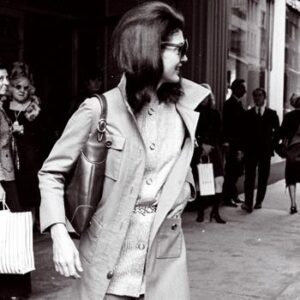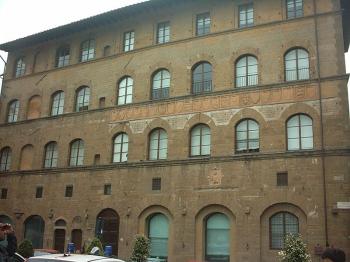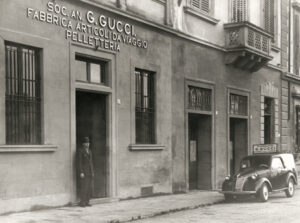Guccio Gucci was born in Florence in 1881. He went as an immigrant to Paris and then to London, finding a job in exclusive hotels, such as the Savoy in London. He was impressed with the luxurious luggage of the sophisticated guests he saw. When he returned to Florence, a city distinguished for a very old tradition of high-quality materials and skilled artisans, he established a shop in 1921 that sold fine leather goods with classic styling, employing skilled workers in basic Florentine leather crafts.
In few years, the brand obtained an international echo, attracting a rich and elegant customer base which appreciated its bags, suitcases, gloves, shoes and belts.
The company made handbags of cotton canvas rather than leather during World War II as a result of material  shortages. In this period the bamboo-bag was created, becoming one of the icons of the House of Gucci.
shortages. In this period the bamboo-bag was created, becoming one of the icons of the House of Gucci.
With the opening of the shops in New York and Milan, Gucci established its name as a leader in the fashion business. After Guccio’s death in 1953, his three sons, Aldo, Vasco and Rodolfo expanded the company’s horizons. Film stars and jet-set travellers to Italy during the 1950s and 1960s brought their glamour to Florence, turning Gucci’s merchandise into international status symbols. Movie stars posed in Gucci’s clothing, accessories, and footwear for lifestyle magazines around the world, contributing to the company’s growing reputation.
This year, 2011, Gucci celebrates the 90th anniversary, culminating with the official public opening of the GUCCI MUSEO inside the historic Palazzo della Mercanzia (the Merchants’ Palace) located in Florence’s Piazza Signoria.
 A permanent exhibition from its rich and culturally significant archive, preserved and amplified throughout the years, is juxtaposed with contemporary art installations supported by the Pinault Foundation. The ticket is 6 euros and the half price will go to a fund for the restoration of Florentine works of art.
A permanent exhibition from its rich and culturally significant archive, preserved and amplified throughout the years, is juxtaposed with contemporary art installations supported by the Pinault Foundation. The ticket is 6 euros and the half price will go to a fund for the restoration of Florentine works of art.

